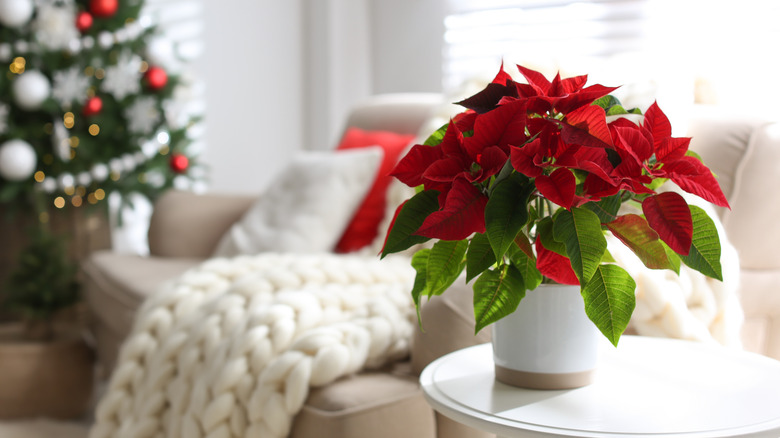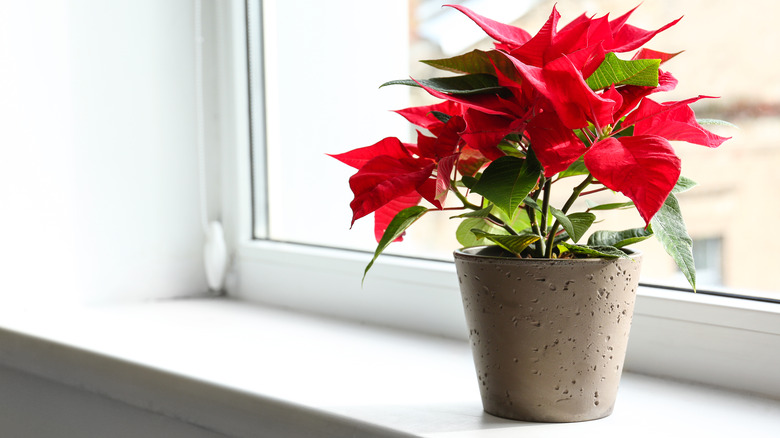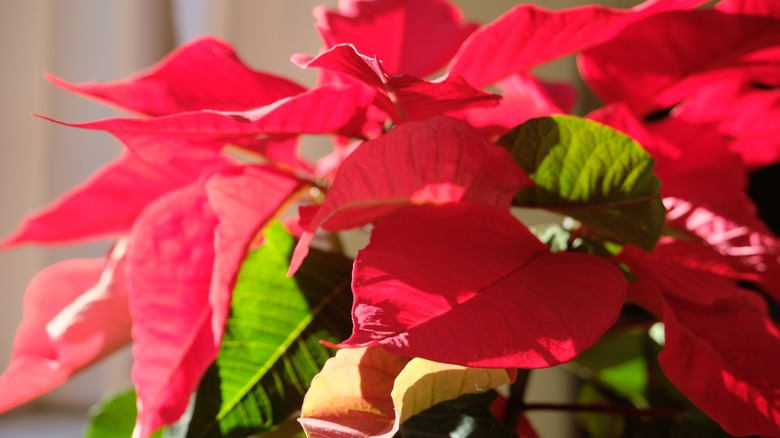Here's How Often You Should Be Watering Your Poinsettia
Poinsettias are one of the most popular winter flowers, found in almost every store and garden center across the country during the colder season and especially during the holidays. This trend wasn't popularized until the early 20th century, according to Swansons Nursery, when the Ecke family of Ecke Ranch cemented poinsettias as a staple holiday flower.
Cultivated by the Aztecs long before it was transported to the United States in the 1800s, the poinsettia is a beautiful, mostly red flower with dark green foliage, fitting right into most holiday displays. The beauty of poinsettias doesn't have to be limited to the winter months, though. Utah State University Extension says that, with proper care, the flower can be kept alive year-round like any other houseplant, just slightly more involved. Whether you intend to maintain your poinsettias all year or just for the winter months, you should still keep up with routine care, like regularly watering the red flowers.
Water regularly so they don't dry out
Poinsettias don't have any unique watering needs when compared to most houseplants. The issue lies in how they're planted and packaged at most big box stores. University of Minnesota Extension says that poinsettias need consistently moist, but never waterlogged or soggy, soil. This means the flowers need to be planted in well-draining soil and a pot with adequate drainage holes.
Most poinsettias at the store come with a decorative foil wrapped around the pot, which can significantly reduce the water's ability to drain out properly. Not only should you remove this foil for proper poinsettia maintenance, but you should also consider repotting the flowering plant into a separate pot with a large drainage hole and higher-quality potting soil. Adding vermiculite can help hold onto water and prevent your poinsettias from drying out, per Hydrobuilder. Sand or small pebbles can help with added drainage. If you want to be extra secure, consider getting a moisture meter. In general, check your plant every day or so to ensure the soil doesn't dry out.
Other poinsettia care tips
While proper moisture levels are incredibly important in terms of keeping your poinsettias alive, it's not the only factor. Temperature is also very important — since the plant is grown in hot conditions, you need to be careful not to expose it to temperatures cooler than 50 degrees Fahrenheit, and ideally no less than 65 degrees indoors, per University of Minnesota Extension. This applies to bringing the plant home — make sure to get a plastic sleeve for the flowers while transporting it to your car, as even brief exposure to freezing weather will send your poinsettia into shock and kill it.
Even in ideal temperatures, be careful not to place them under dry sources of air like a heater, vent, fan, fireplace, etc. This is all you need to do during the winter months to maintain healthy, vibrant poinsettias. Afterward, keep an eye out for any signs of new growth, at which point you should start fertilizing the flowers every three weeks with a diluted houseplant fertilizer. Also, cut off any dull or dying flowers. Be careful, as the milky sap the flowers release is a known skin irritant.


